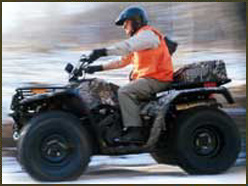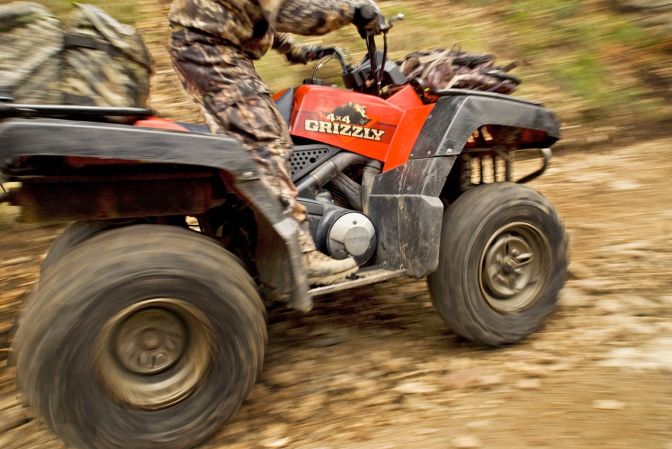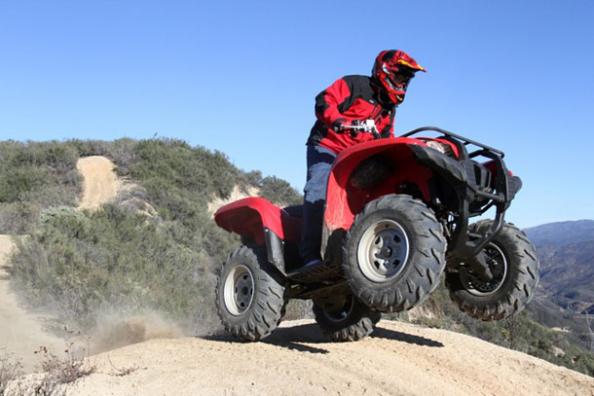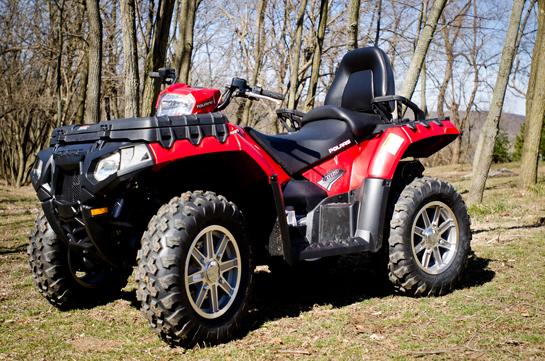We may earn revenue from the products available on this page and participate in affiliate programs. Learn More ›
Maintenance
**1. Pump Up
** Uneven pressure in the front tires can cause an ATV to “pull” to one side and put stress on tie rods. Check the tire pressure before each ride with a dial-type gauge with a range of zero to 15 pounds.
[pagebreak] **2. Dust Off
** Dusty conditions can clog an air filter enough to reduce power, which can lead to premature piston wear on two-stroke engines. Get in the habit of pulling the filter and tapping it against a tire to knock off accumulated dirt at the end of each ride.
[pagebreak] **3. Get Hot
** Always be sure to let the engine warm up to operating temperature. If you make frequent short trips, try to take a longer ride on occasion, or ride in low range to help the engine warm up faster.
[pagebreak] **4. Take a Bath
** An engine or radiator that’s caked with mud will run hot. Dirt packed around disc brakes can lead to premature pad or rotor wear. Hose the mud off your ATV after riding to avoid these problems.
[pagebreak] **5. Filter Out
** A paper air filter should be replaced at least once a season, more often in dusty conditions.
[pagebreak] **6. Fast Flat Fix
** To temporarily mend a moderate cut in a tire sidewall, try jamming several puncture plugs from a tire repair kit into the cut. Give it time to set before airing up, then limp home slowly.
[pagebreak] Riding Tips
**7. Sit Back
** Whenever you can, ride straight downhill. Move back on the seat to shift your weight as far to the rear as possible.
[pagebreak] **8. Downshift
** To maintain control and avoid locking up the wheels when descending steep grades, select low range and use your engine’s compression to control your speed and crawl down without touching the brakes.
[pagebreak] **9. Scout First
** Before taking on a long, steep climb, scout ahead on foot to determine what lies on the other side.
[pagebreak] **10. Lean In
** Try not to cross a slope with a slick or loose surface. Always lean uphill.
[pagebreak] **11. Watch Skids
** Avoid using the brakes on slick or loose terrain to keep from spinning out.
[pagebreak] **12. Look Up Top
** Slow down as you crest a hill so you’ll have time to react to an obstacle, a person or another ATV that might be out of view but in your path.
[pagebreak] **13. Take It Slow
** Hitting water at high speed can cause your wheels to hydroplane and make you lose steering control. Always ease through water.
[pagebreak] **14. Dry Off
** After a water crossing, make a few quick stops to dry your brakes.
[pagebreak] **15. Watch Turns
** Never make a sharp turn when going up or down a hill. If the ATV begins to tip, steer gradually in the downhill direction if possible.
[pagebreak] Young Riders
**16. Take a Class
** Sign up the entire family for one of the ATV Rider Courses conducted at more than 1,000 locations by certified ATV Safety Institute instructors (800-887-2887; atvsafety.org). Most manufacturers are willing to cover the cost of the class if you buy a new ATV from them.
[pagebreak] **17. Safety First
** When teaching young riders, take ATV safety as seriously as you would gun safety. Teachh respect for the machine and for the environment.
[pagebreak] **18. Test Skills
** Make sure a young rider has the physical strength, motor skills and emotional maturity to ride safely.
[pagebreak] **19. Be a Leader
** The best way to get a young rider to wear a helmet is to wear your own helmet every time you ride.













